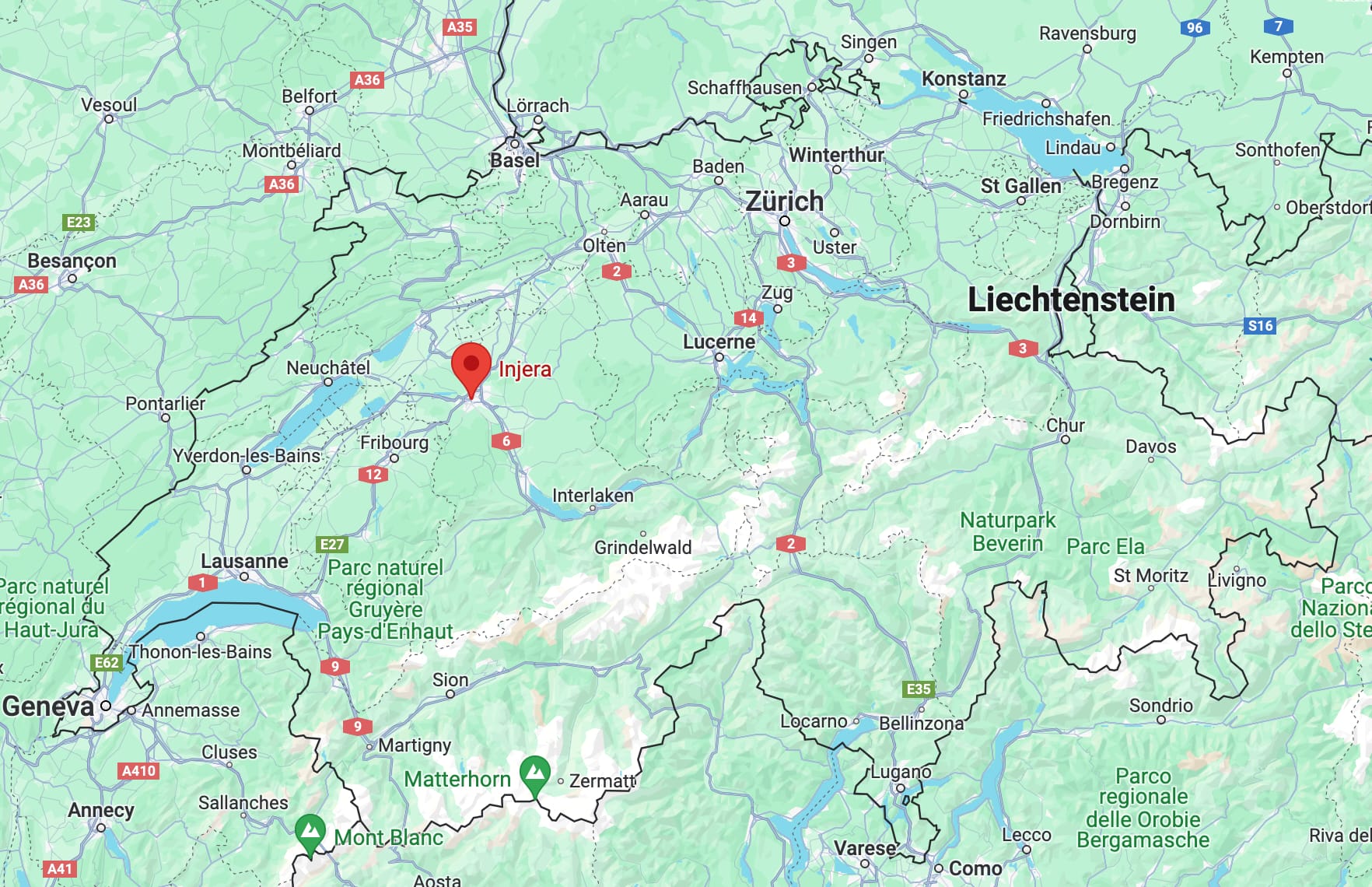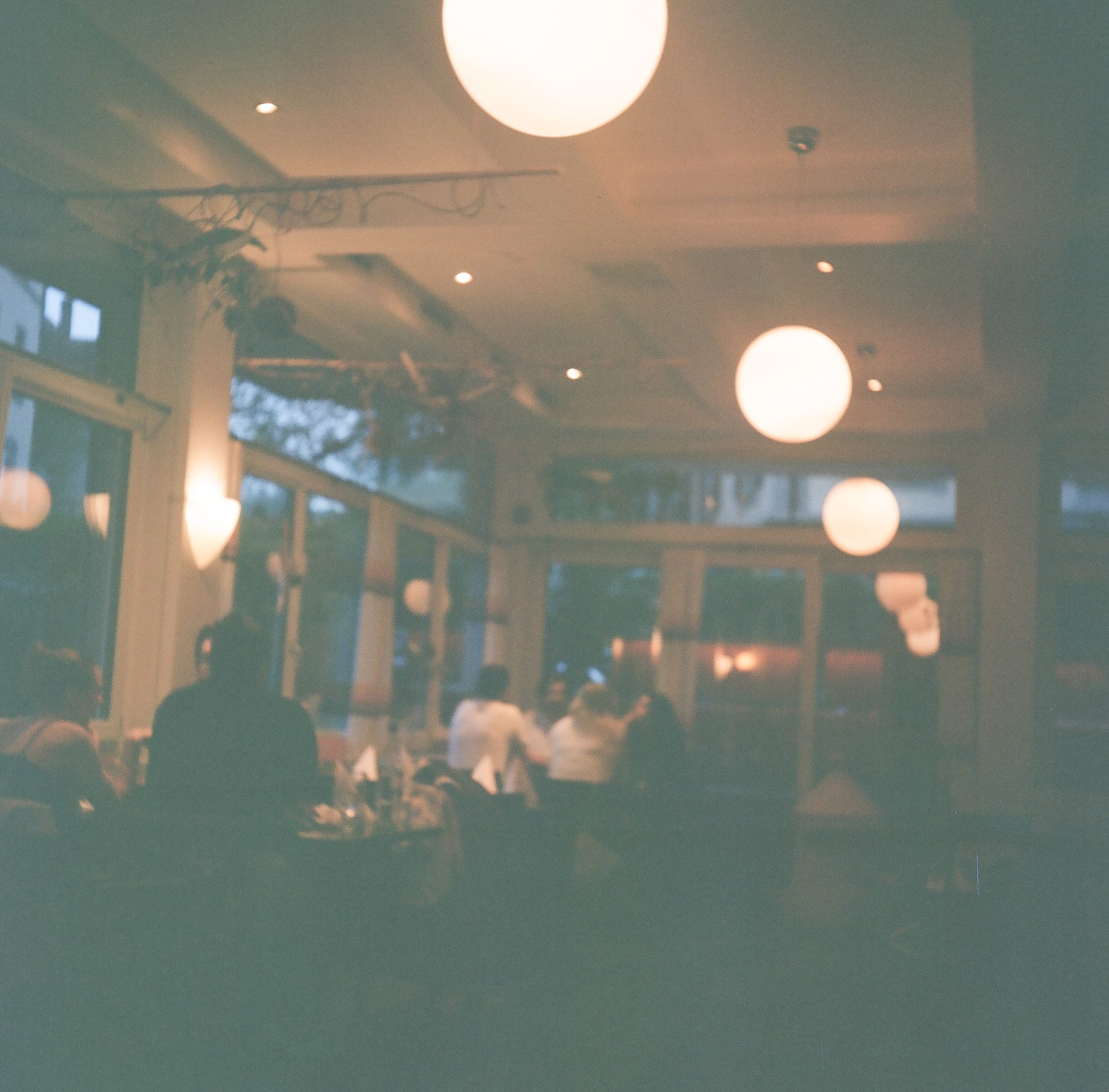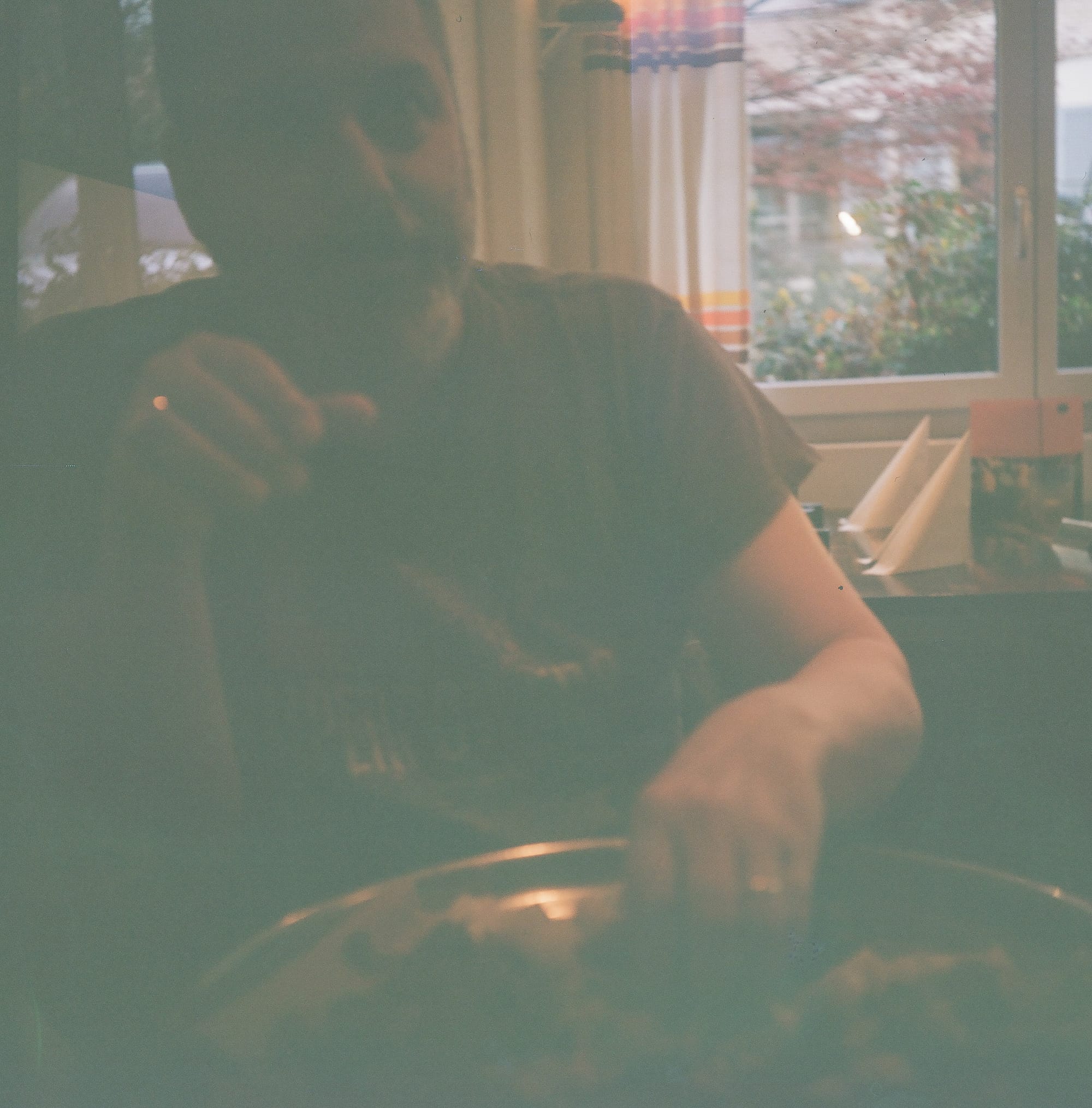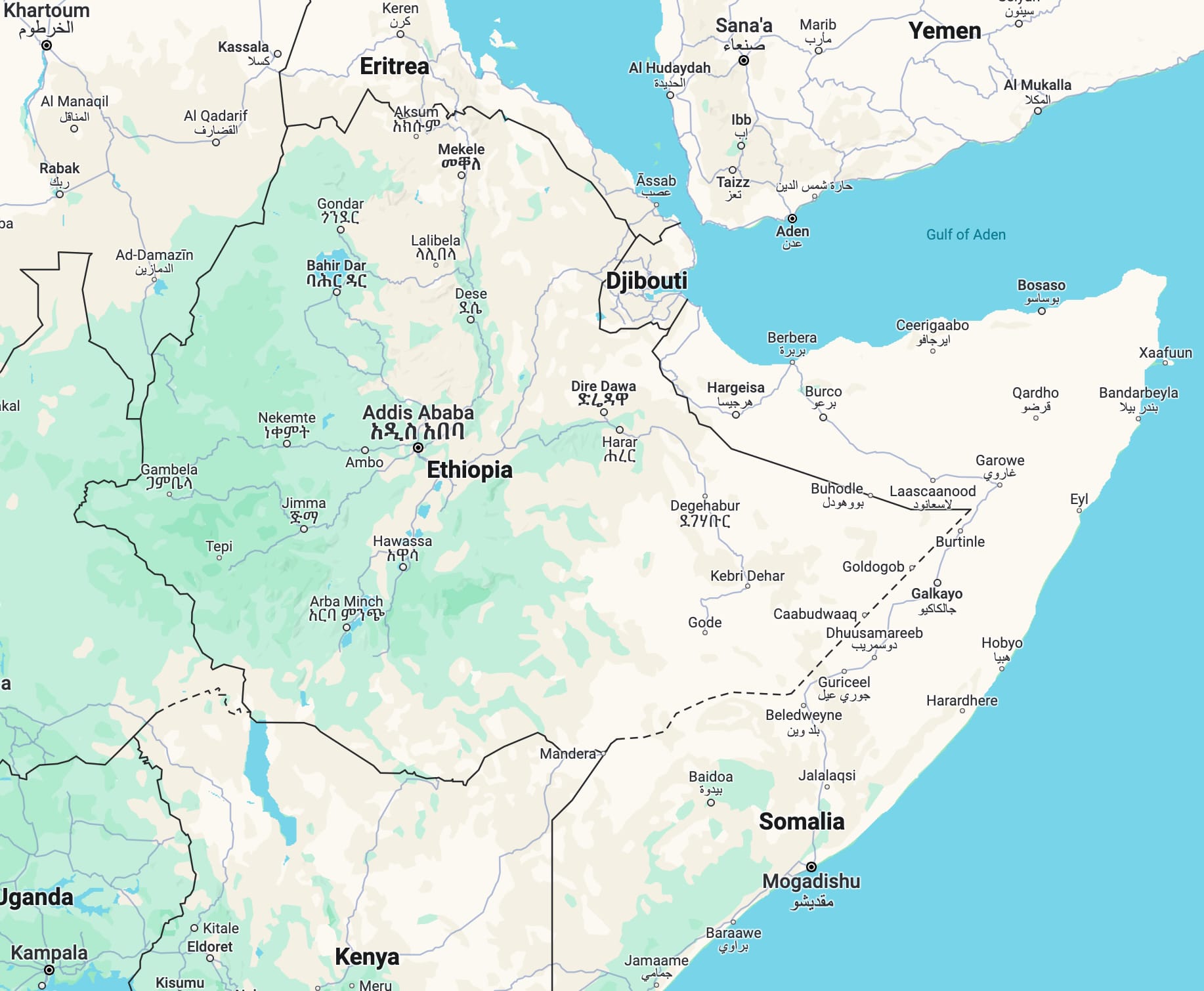Where to eat ETHIOPIA 🇪🇹 Bern: Injera
Injera is tastefully decorated with artifacts, photographs and furniture that hints at East Africa while still providing a sense of place within the space... While Ethiopian food is finger food, it is perhaps the most refined of all...

Injera
Gesellschaftsstrasse 38, Bern

Published June 25, 2024 · by Amanda Rivkin Häsler
What we ordered: We had the “experience menu” (erlebenismenü) for two persons consisting of every dish on the menu – except they did not have lamb tibs the night we visited – served over injera, Ethiopia’s spongy pancake-like bread. To drink, we ordered two large house beers, which is made with hints of cardamon.
Cost: 106 CHF / €110 / $118
Injera is a lovely, true neighborhood establishment located in the Länggasse quarter just up the hill from Bern’s central train station. While Injera has been open for roughly 13 years, it has the vibe of a place open to locals for decades, and not because the décor is shabby or in need of an update, quite the opposite. Injera is tastefully decorated with artifacts, photographs and furniture that hints at East Africa while still providing a sense of place within the space.

On the night we visited, a local Albanian family took a long table for a multi-generational celebration. Three women shared a table behind us and other parties sat a bit in the distance. The outdoor tables filled up too as it was one of the first nights of warm weather all year. Despite the restaurant being quite busy, the service was good if a bit languid at times, and the acoustics were sound, so to speak.
Before the meal but after our beers – packed with subtle hints of cardamon – the waiter brought us a kettle with water to wash our hands and a towel to dry them. It was more than just a gesture at cleanliness but the first sign the food was coming as Ethiopian food is consumed without utensils around a communal platter for the table. Ethiopia’s sponge-like thin injera bread is used to scoop up all the food, and dishes are served over a spread of injera in the center of the table.
While Ethiopian food is finger food, it is perhaps the most refined of all and packed with flavors, spices and variety, especially if opting for a combination of things as we did. Injera is also deceptively filling. Made of teff flour, it is not the easiest to procure outside of East Africa, but done right, its delicate and darker flavors punctuate all of the meats, lentils and vegetables it is used to scoop up.

For this reason, we absolutely skipped the appetizers. We did after all set our sights on a combination of everything on the menu, sadly absent the tibs, always one of the best dishes in any Ethiopian meal, whether lamb or beef.
Our “experience menu” came fully loaded but our waiter left and returned with the specialty to finish off the plate, the doro wat, a chicken stewed in berbere spices with egg. It was truly buttery and overwhelming in flavor. Other dishes on the plate included lentils of a variety of colors and kinds, chicken, salad and beef as well. Doro wat is Ethiopia’s national dish and the version served at Injera did not disappoint as it was savory and subtle at once.
The success of Injera is in the fact that it is a bridge built between Ethiopian culture and a Swiss neighborhood. It was as much a place for Ethiopians to come to feel at home as it is a space for locals to come and celebrate the quotidian events that mark the life of a family. The beer was unique as well.
It is a spot you do not find everywhere in every neighborhood, especially in Switzerland, nor is it just marked by traffic from the diaspora. It is the combination of these vibes that is no doubt the reason for their success of more than a decade.

How to get to Ethiopia from Switzerland:
Theoretically by road, one could travel through Italy, Slovenia, Croatia, Serbia, Bulgaria, Turkey, Syria, Jordan, Egypt, and Sudan before arriving in Ethiopia. Syria and Sudan are currently ravaged by civil wars, so probably not the best idea, but maybe check road conditions once peace reigns through these lands.
Embark on such an odyssey at your own peril and be prepared with all manner of provisions when you do. Consider a personal security team, first aid training, survival skills and a smooth tongue and perhaps some whiskey to facilitate finding one’s way through checkpoints.
Definitely consider there are easier ways to get to Ethiopia from Switzerland, such as by air! We recommend going this route, we want our readers to have adventures but also live to tell the tale!
From Zürich, Lufthansa offers a route via Frankfurt with a connecting flight on Ethiopian Airlines. Swiss Air offers another option via Cairo with a connection also on Ethiopian Airlines. These are currently the fastest ways to get to Addis Ababa at around nine hours, though the layovers may be precariously short at around one hour. Austrian Airlines, Ita Airways and Swiss Air all offer flights that connect through Vienna, Rome and Frankfurt to Addis Ababa with Ethiopian Airlines that take around 10 hours. Emirates offers a connection through Dubai that is just under 15 hours.
From Geneva, Ethiopian Airlines offers a nonstop flight that takes just under seven hours. Ethiopian Airlines also offers code share flights with Austrian, Ita Airways, Lufthansa and Swiss Air through Vienna, Rome and Frankfurt that take ten hours or less. Egypt Air additionally offers a codeshare with Swiss Air through Cairo that takes around 11 hours.
How many Ethiopians are in Switzerland: More than 3,500
Distance between Bern and Addis Ababa: 8,232 km
Distance from Injera Restaurant to Addis Ababa: 8,232 km
Learn how to make Ethiopia's national dish, doro wat with injera, and about its origins.
Follow our social media pages @swissglobaldining on Instagram, TikTok and YouTube